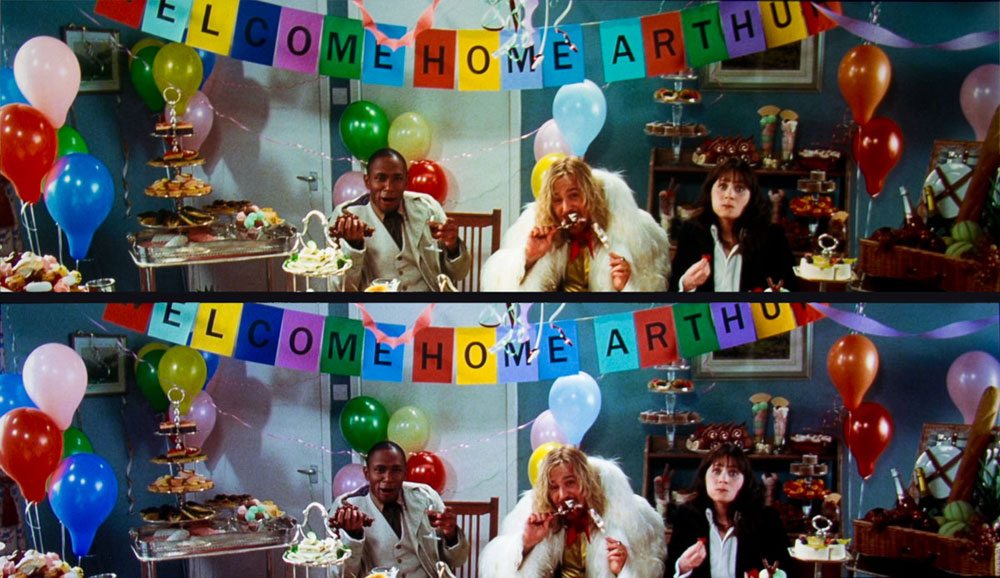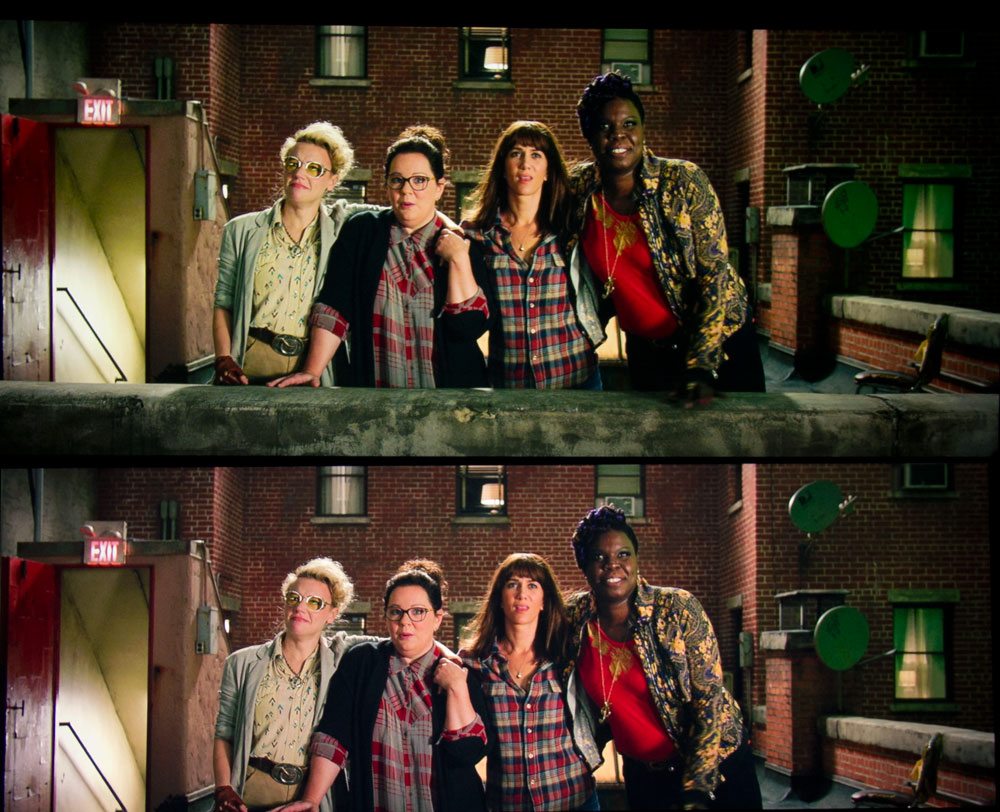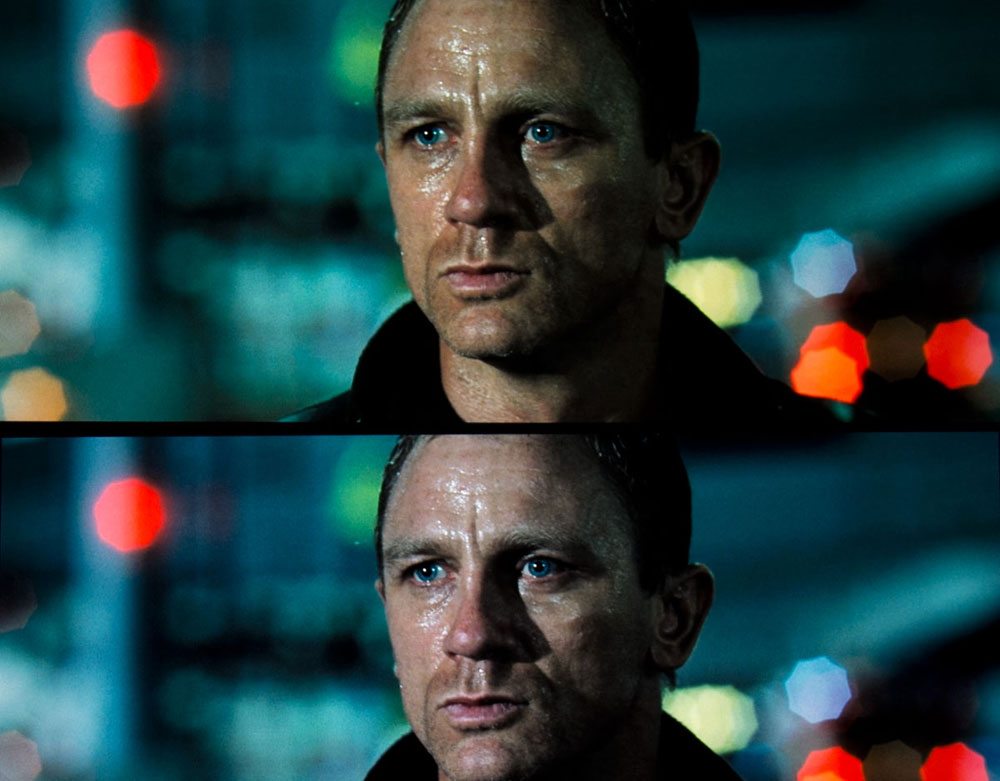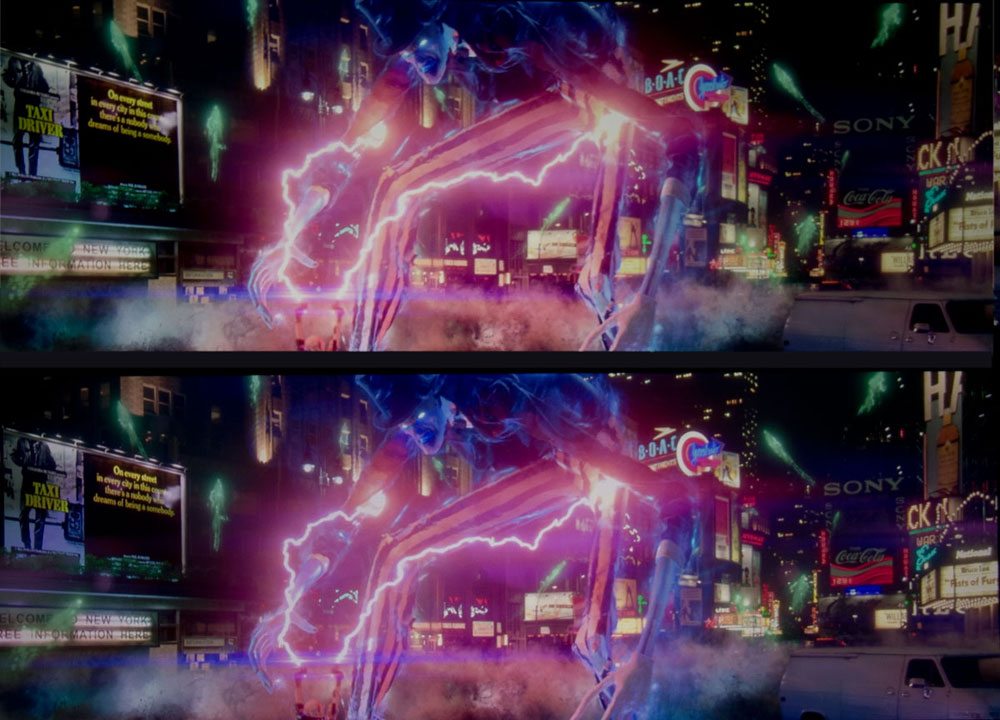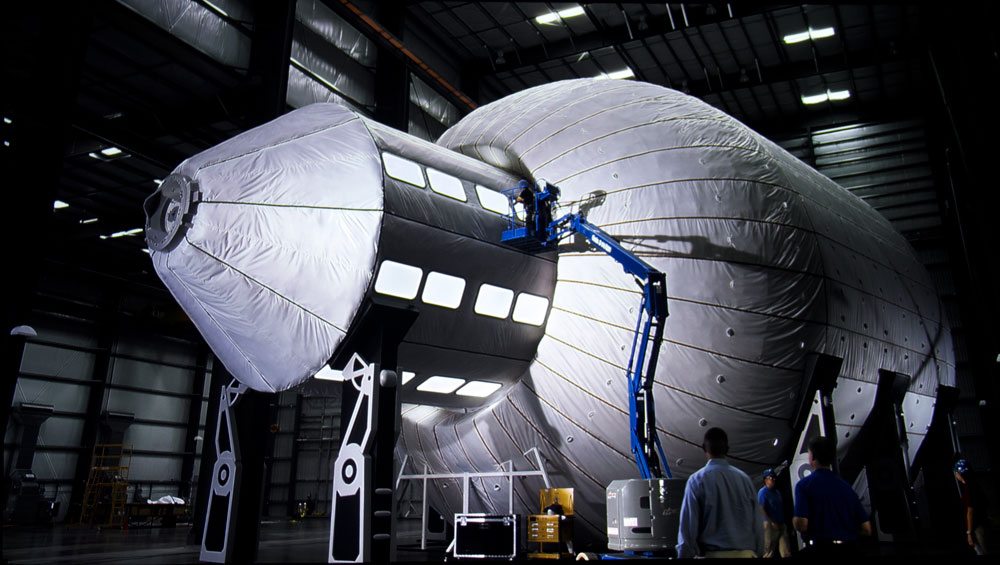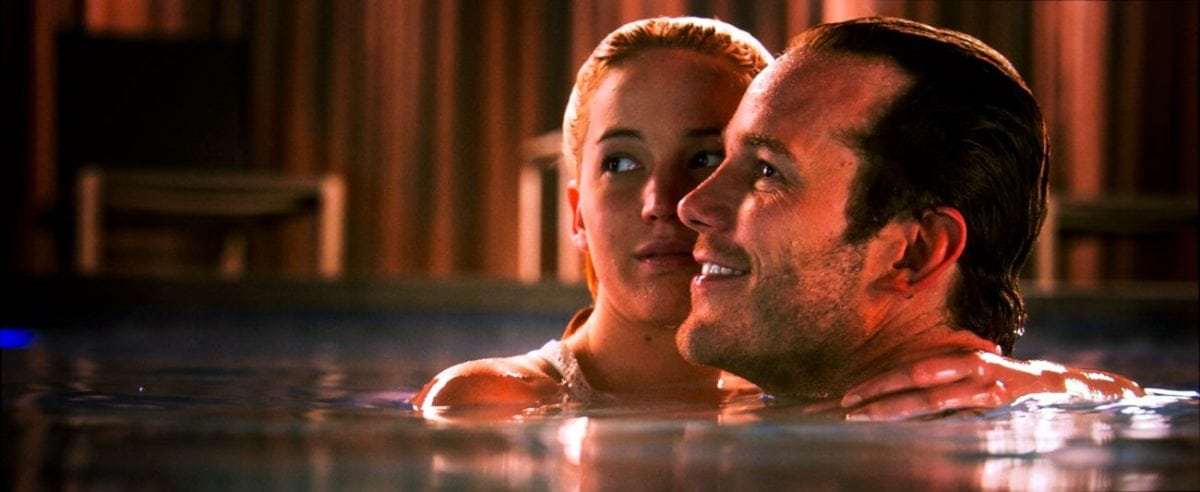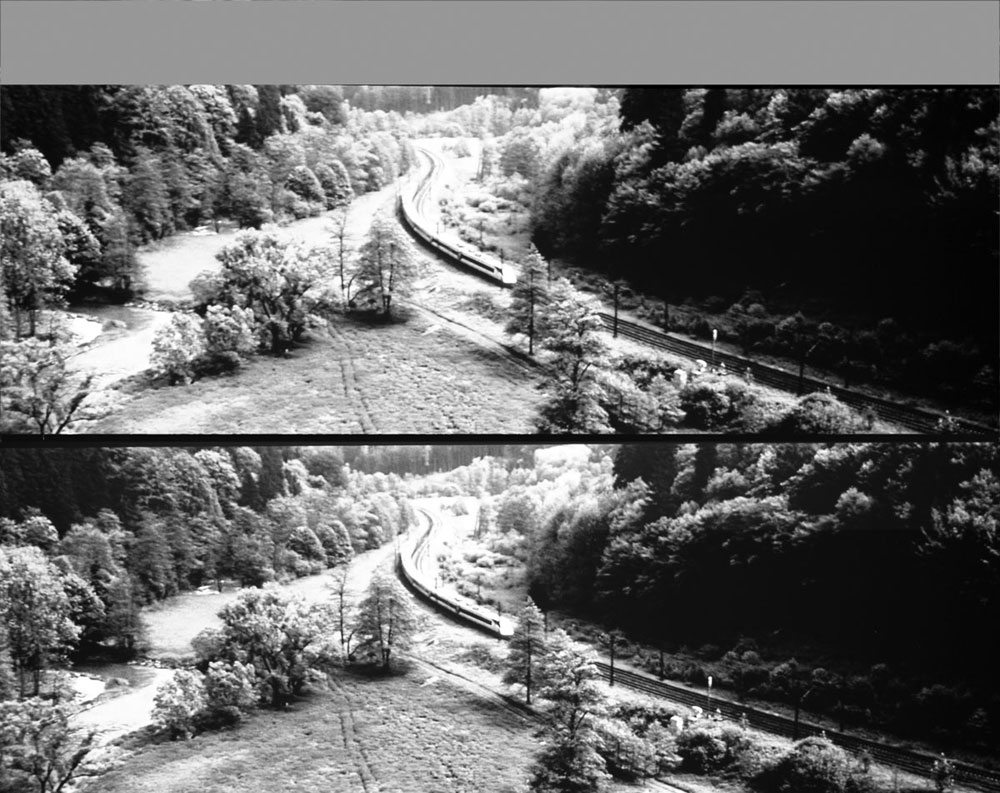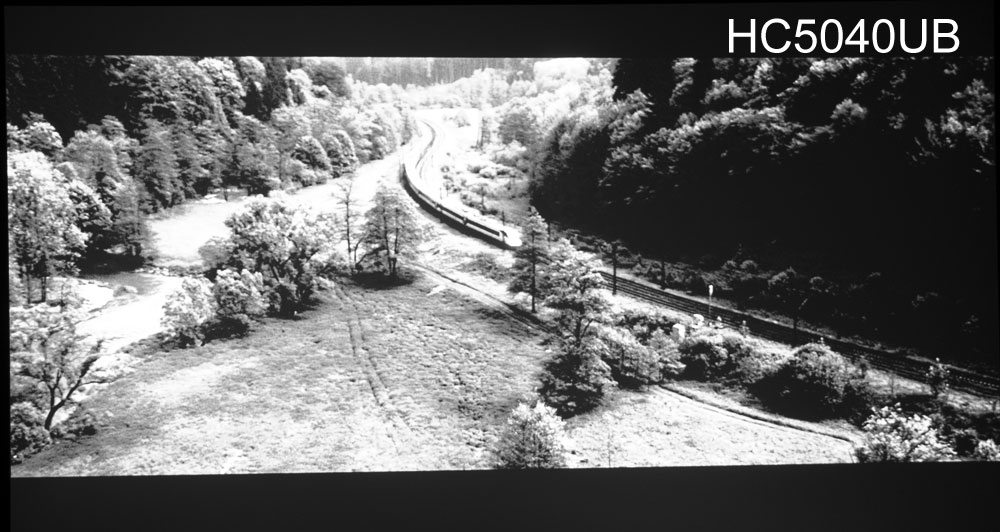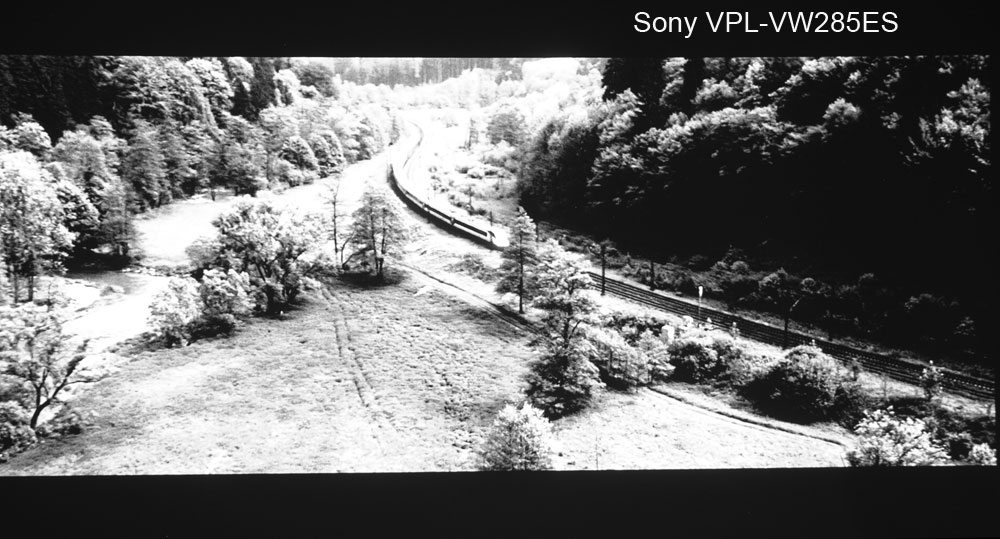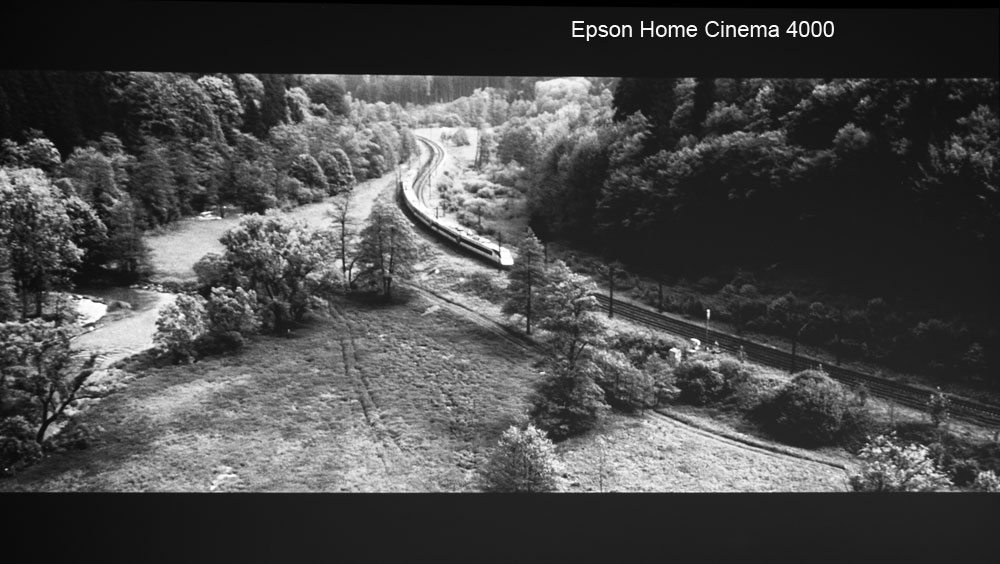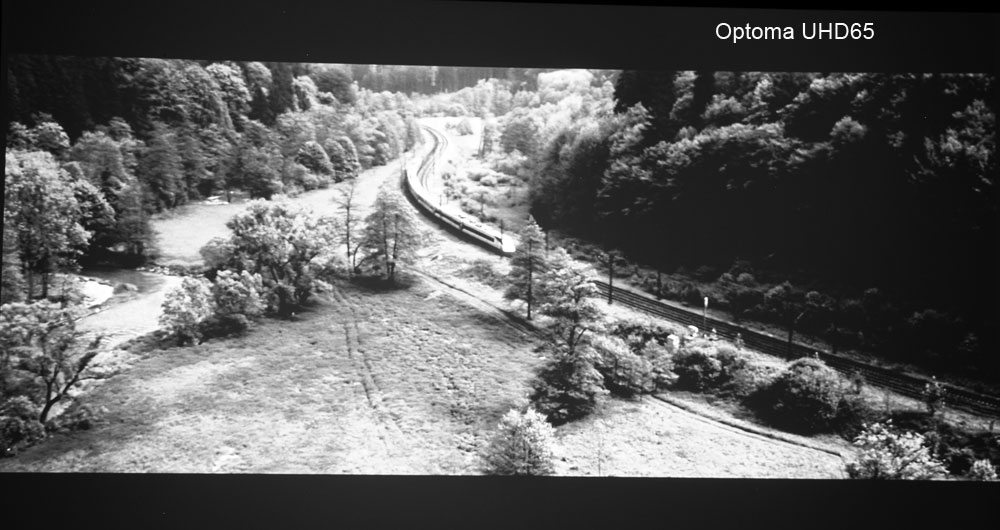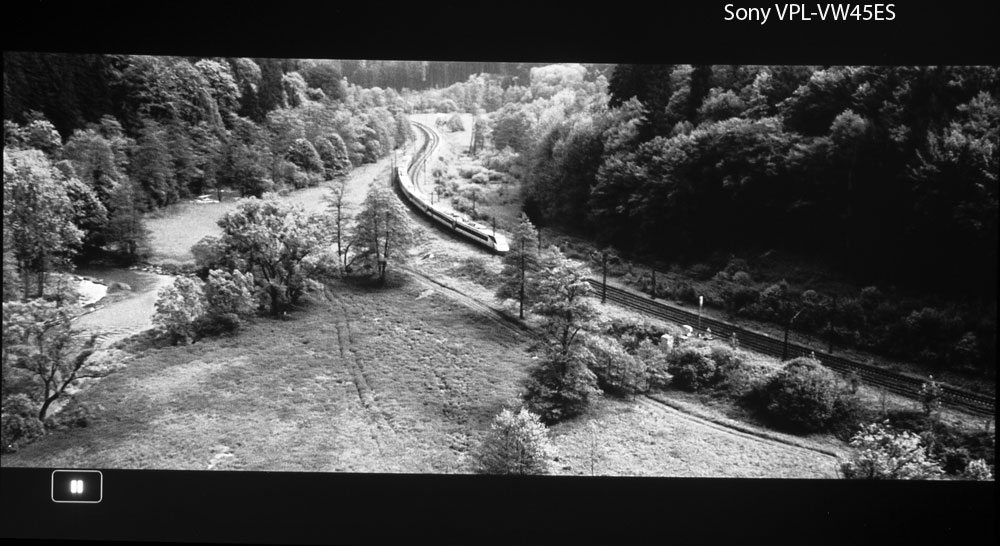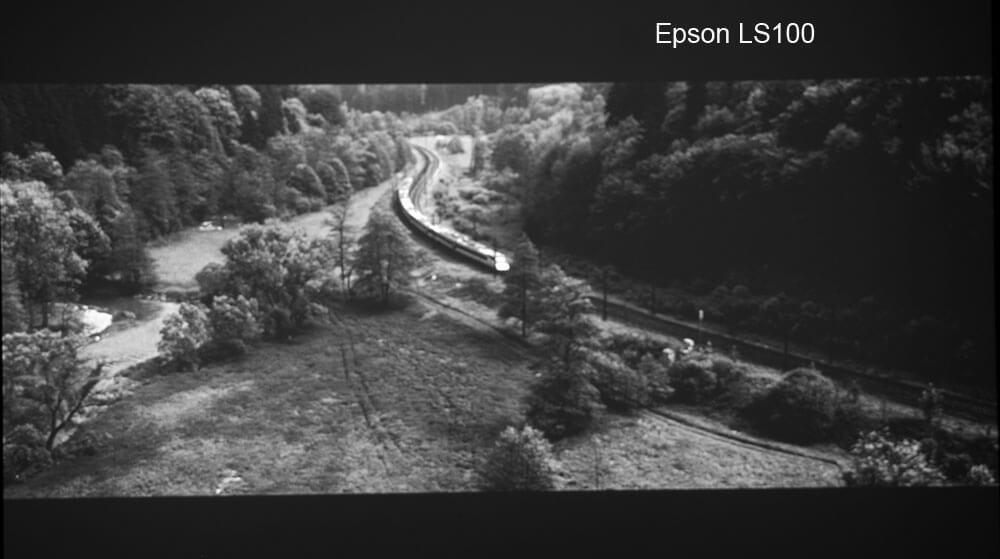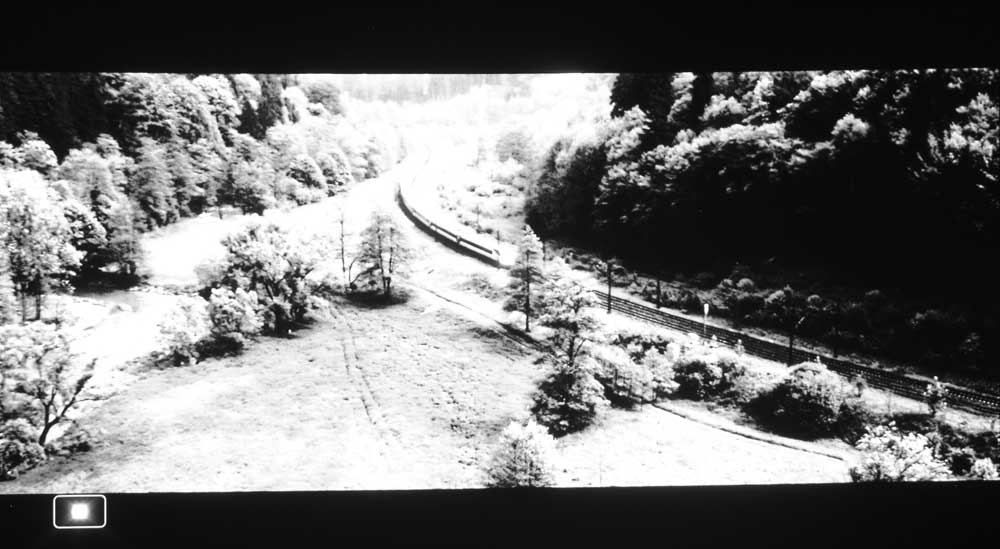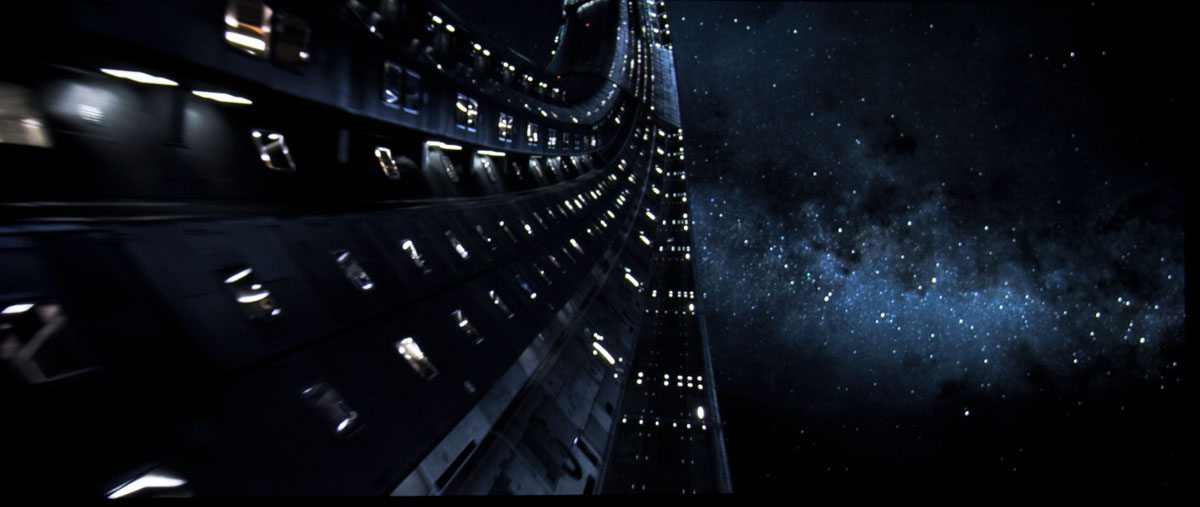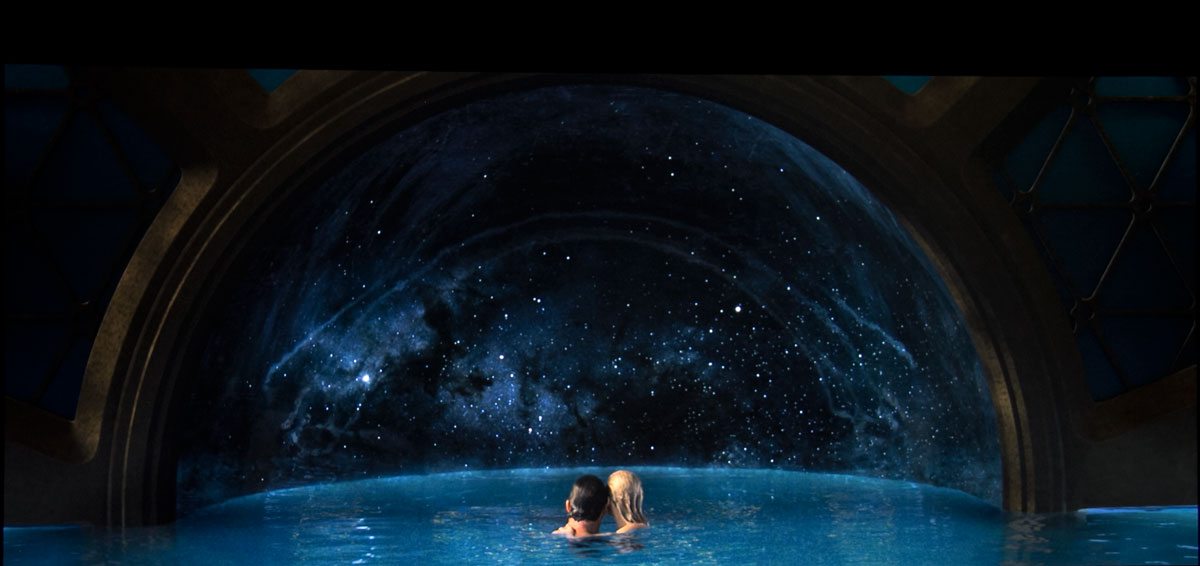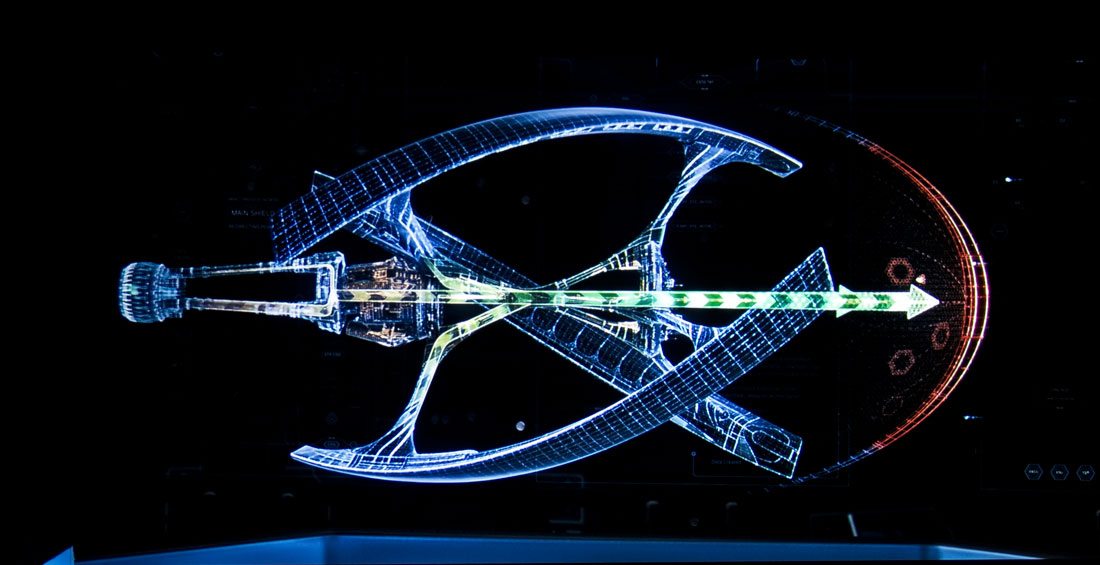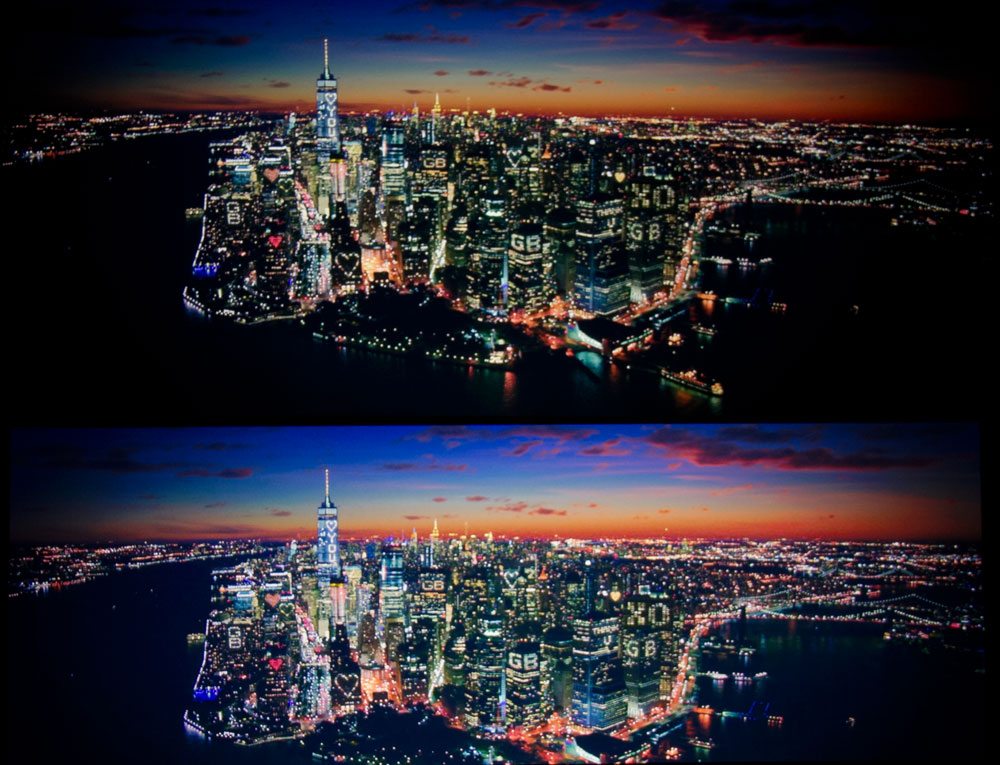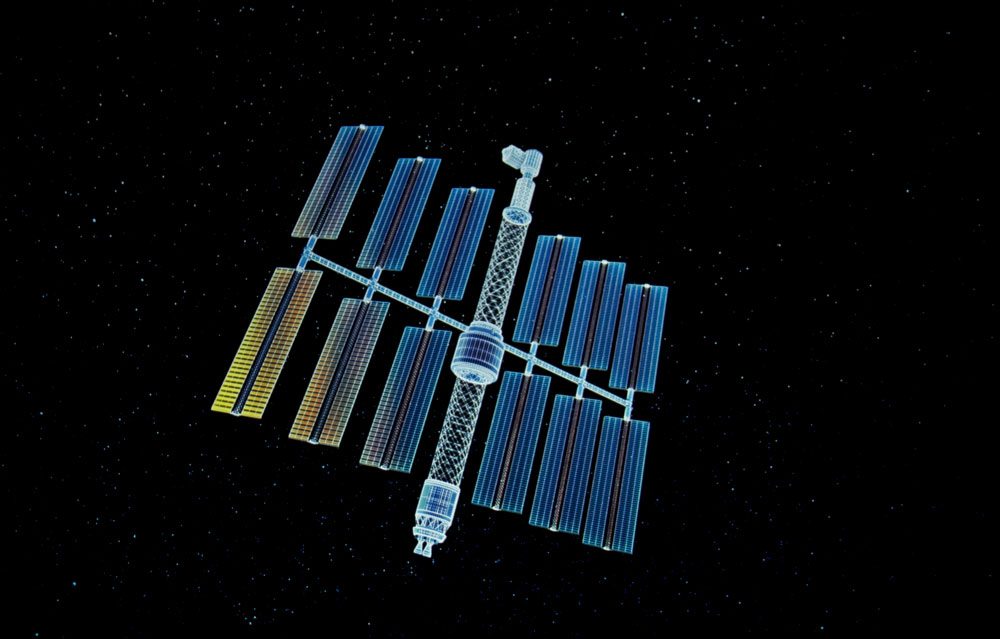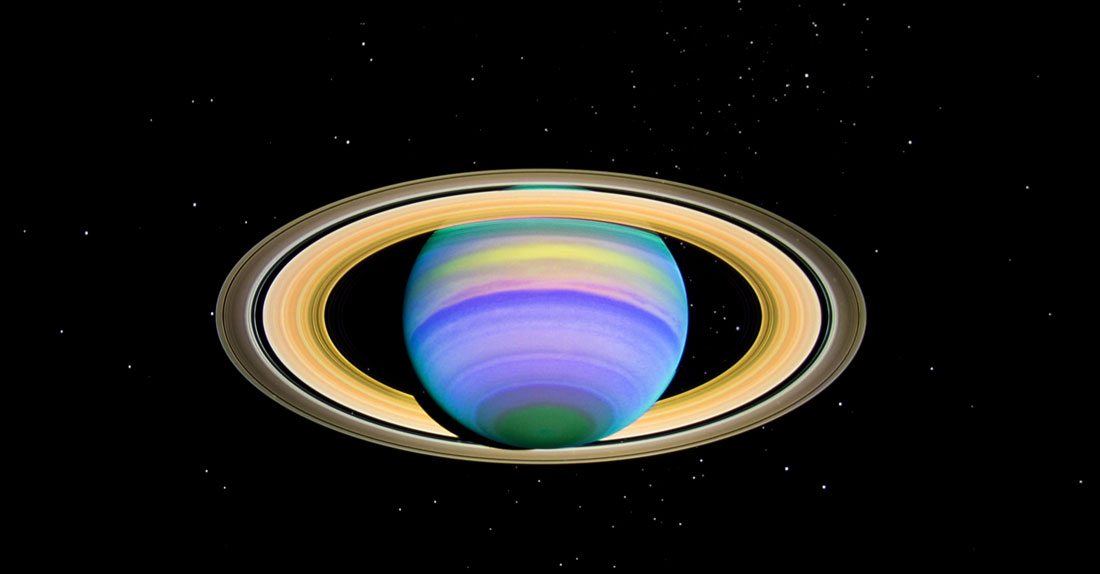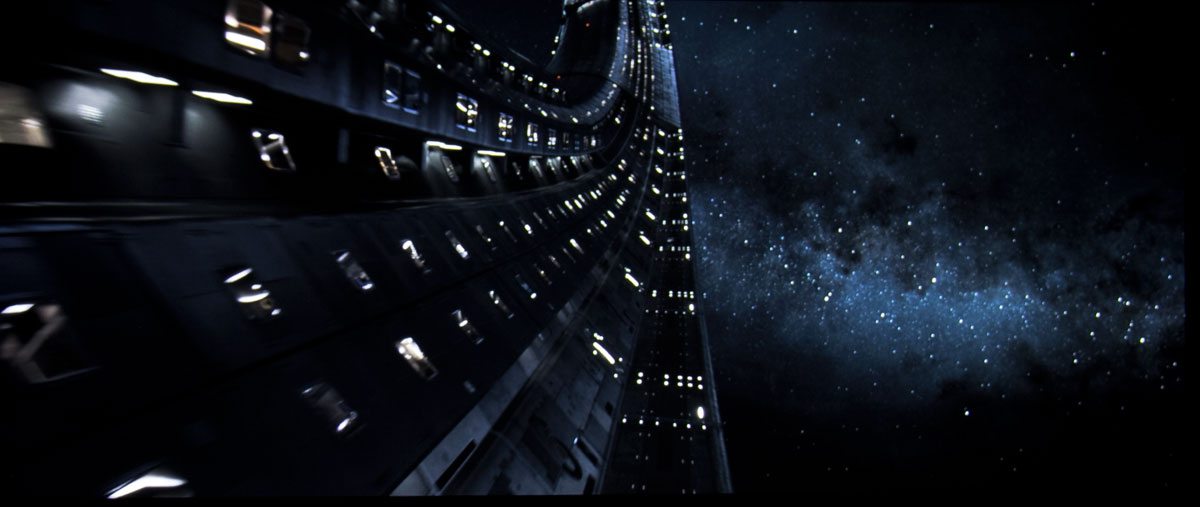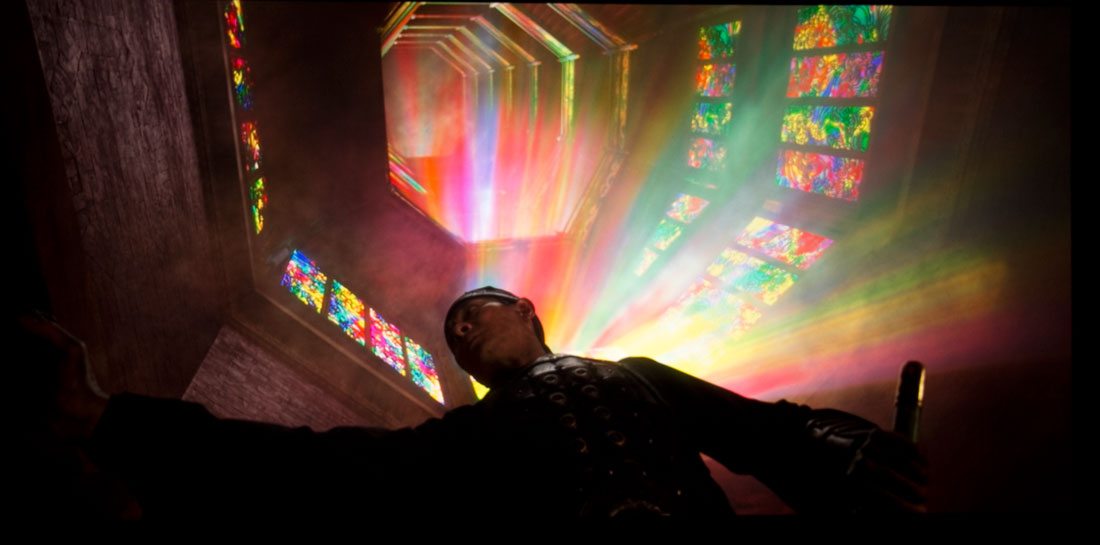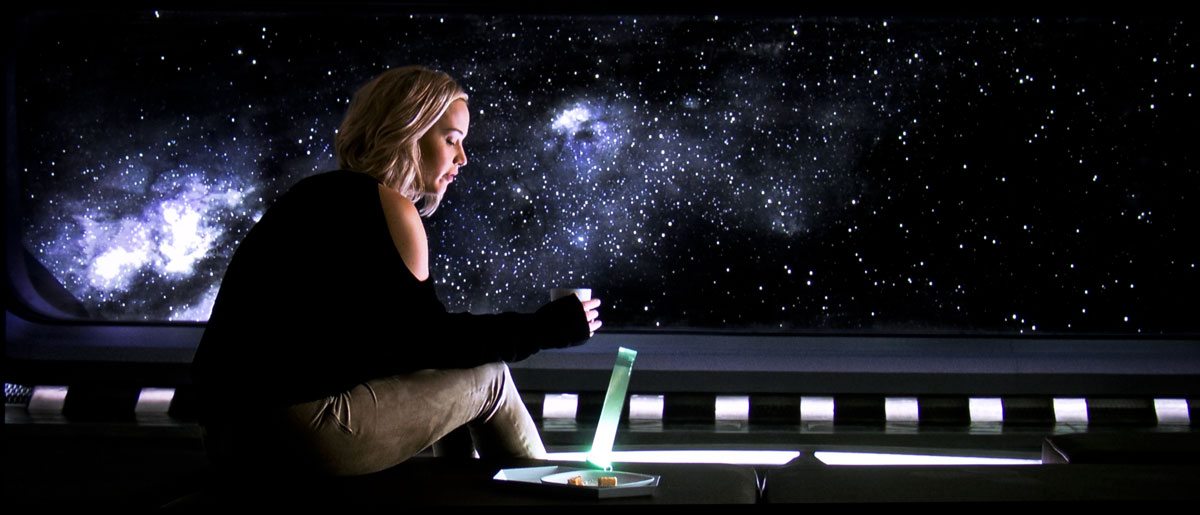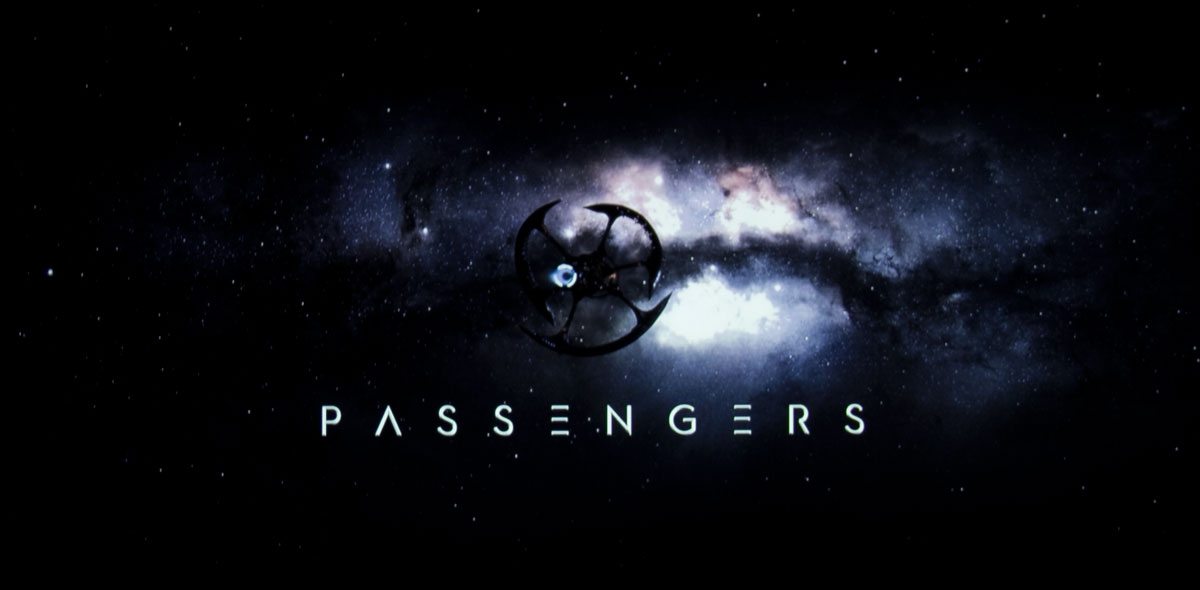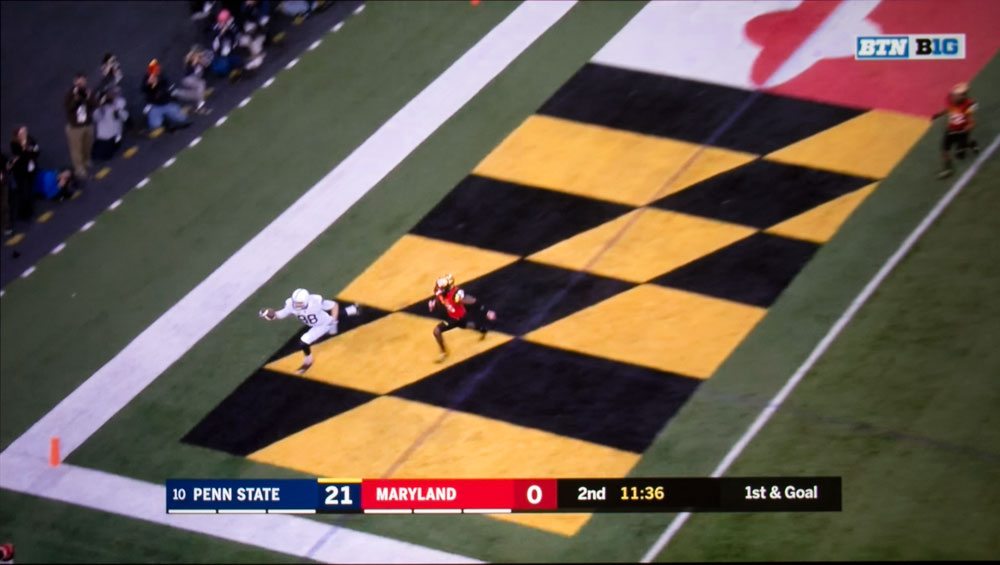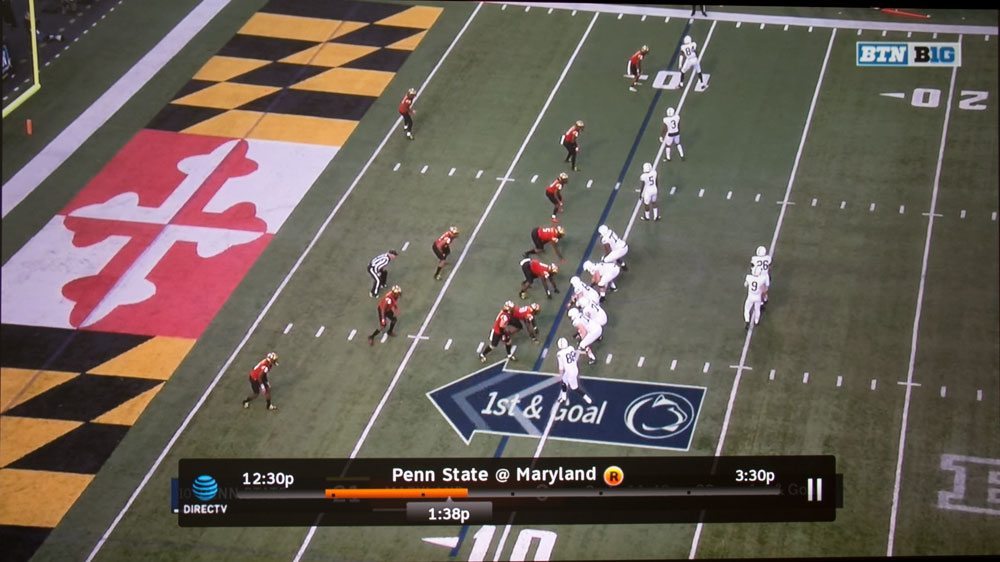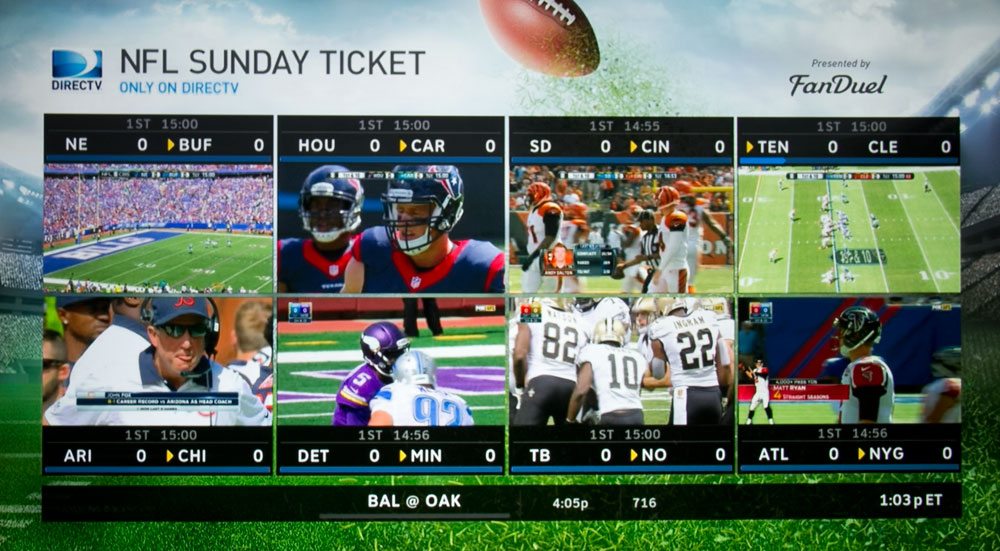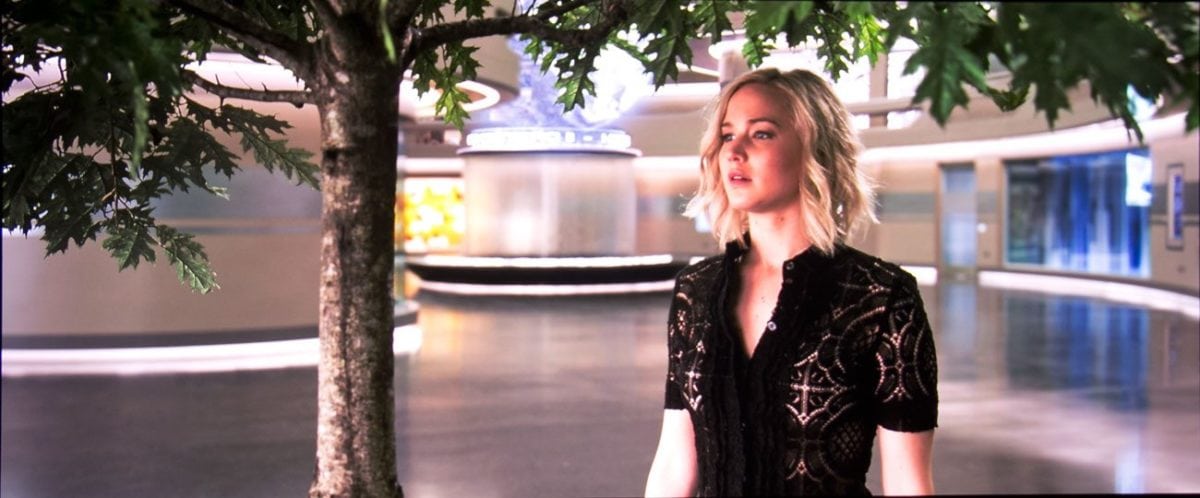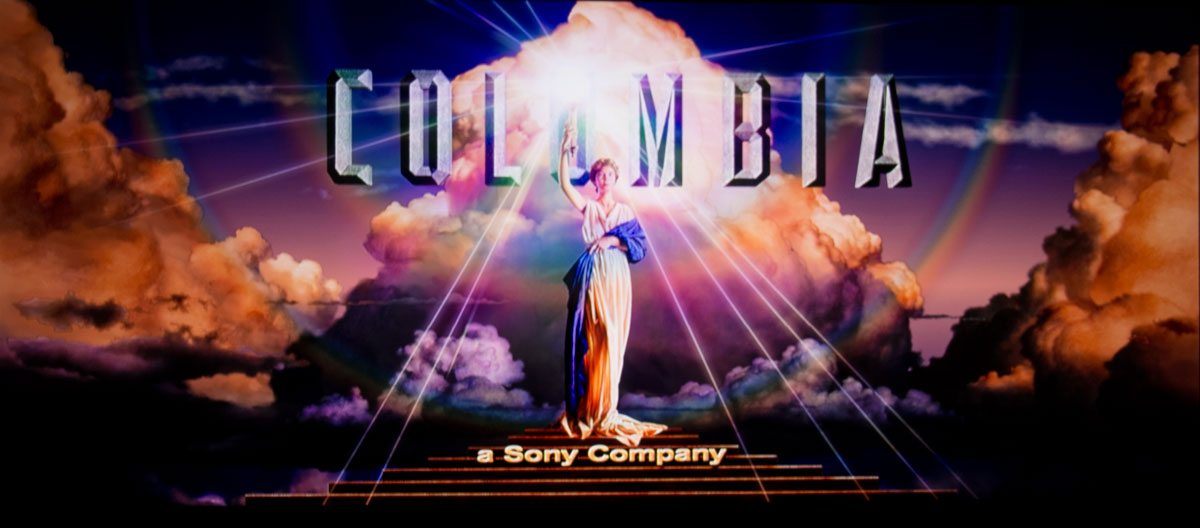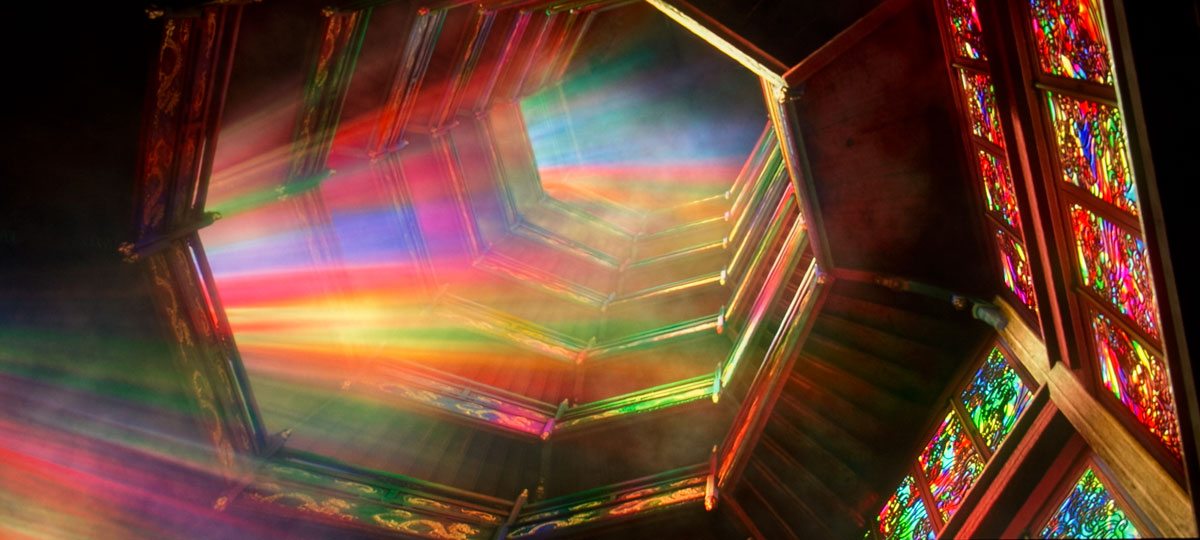Very nicely bright – no question about that. This image player has UHD60 images and also pairs of stacked images (the UHD60 is on the bottom, the UHD65 on the top), from Passengers, Ghostbusters, The Great Wall… Again I must point out that the two projectors are very similar. Of greater note, the UHD60 is brighter than competing 3LCD projectors when doing 4K, and that’s definitely a plus. No dimness here on some of the mid-dark scenes, that I might be pointing out on the Epson 5040UB (although less so on their HC4000).
Still, none of the projectors on the market get close to the called for 1000 NITS brightness for HDR, at least not at 100” diagonal screen sizes. That forces all projector manufacturers to make some compromises. Each company seems to do that differently.
Epson, for example, with their HC5040UB tries to provide as much high dynamic range, resulting in my complaints that some scenes are a bit too dim.
Optoma takes what might be the opposite approach. Their compromise maintains brightness in the mid and lower ranges more than the Epson. End result – no dimness, but also a picture that seems brighter, but a bit less dynamic. Ah, there are always trade-offs.
As to the two Optomas on 4K content, I would put it this way: Similar enough. The Optoma UHD60 will come across slightly brighter, but with some bright pure colors coming across a bit darker than the UHD65.
Overall, the UHD65 has the advantage on 4K, but it is one that is pretty much going to be appreciated by serious home theater enthusiasts. If you are more of the “want a great big picture that looks good” type, the UHD60 works just fine. I would say for the non-enthusiast, the UHD60 is the better value overall, as long as you aren’t rainbow sensitive. After you look at the comparison images, you have to agree, differences are fairly subtle, especially considering that the UHD60 isn’t calibrated.
At the same time, remember that we have to severely compress all these photos from up to 10 megabytes to down around 100K for reasonable web sizes. That alone will compress dynamic range and diminish color depth. None of these photos will really do justice to the projector in a fully darkened room, and it makes color comparisons harder.

